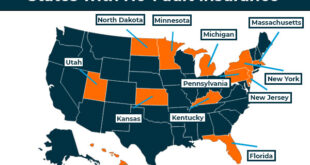Personal Loan Pre-Approval: Streamline Your Loan Process When you’re considering a personal loan, getting pre-approval can be a game-changer. It not only provides clarity on your borrowing potential but also strengthens your financial confidence. In this guide, we’ll delve into everything you need to know about personal loan pre-approval, including its benefits, steps, tips, and frequently asked questions.
What Is Personal Loan Pre-Approval?
Personal loan pre-approval is a preliminary evaluation by a lender to determine your eligibility for a loan. It’s based on key financial metrics like your credit score, income, and debt-to-income ratio. Unlike final approval, pre-approval doesn’t guarantee you’ll receive the loan, but it does give you a conditional offer based on the information provided.
Benefits of Personal Loan Pre-Approval
- Clarity on Borrowing Power
Pre-approval helps you understand the loan amount you qualify for, avoiding unrealistic expectations. - Streamlined Loan Process
With pre-approval, you can fast-track your loan application by skipping initial checks during the final approval phase. - Stronger Negotiating Power
Being pre-approved signals to lenders and sellers that you’re a serious borrower, enhancing your bargaining position. - Reduced Credit Impact
Pre-approval often involves a soft credit check, which doesn’t impact your credit score, unlike a hard inquiry.
How to Get Pre-Approved for a Personal Loan
- Check Your Credit Score
Review your credit score and report to ensure accuracy. Most lenders prefer scores above 650. - Gather Financial Documents
Collect key documents like proof of income, tax returns, and existing loan statements. - Compare Lenders
Research and compare lenders for their interest rates, fees, and pre-approval processes. - Submit Pre-Approval Applications
Fill out applications with accurate details, including your desired loan amount and term. - Review Your Offers
Once pre-approved, evaluate the loan offers for terms that best meet your needs.
Common Requirements for Personal Loan Pre-Approval
- A valid ID to verify your identity.
- Proof of income to demonstrate repayment ability.
- A good credit score to meet the lender’s standards.
- Debt-to-income ratio below 40% to show manageable liabilities.
Factors Affecting Your Pre-Approval Chances
- Credit History
A history of timely payments boosts your credibility. - Income Stability
Steady income reassures lenders of your repayment capability. - Debt-to-Income Ratio
High existing debt can lower your pre-approval amount. - Employment Status
Full-time employees are often preferred over part-time or freelance workers.
Common Myths About Personal Loan Pre-Approval
- “Pre-Approval Guarantees Loan Approval”
Not true—pre-approval is conditional. - “Only High-Income Earners Qualify”
Lenders consider multiple factors, not just income. - “Pre-Approval Hurts Credit Scores”
Most lenders use soft checks that don’t impact your score.
Pros and Cons of Personal Loan Pre-Approval
Pros
- Provides loan clarity.
- Speeds up the loan process.
- Helps compare loan offers.
Cons
- Not a guarantee of loan approval.
- Offers may expire quickly.
- Limited to specific loan amounts and terms.
10 Tips for Personal Loan Pre-Approval
- Check your credit score before applying.
- Pay down existing debts to improve your debt-to-income ratio.
- Research and compare multiple lenders.
- Be honest on your application to avoid rejections.
- Avoid applying for multiple loans simultaneously.
- Gather all necessary financial documents.
- Choose a realistic loan amount and term.
- Ensure steady employment or income sources.
- Use a loan calculator to estimate payments.
- Monitor your pre-approval status and follow up if needed.
10 FAQs About Personal Loan Pre-Approval
1. What is the difference between pre-approval and pre-qualification?
Pre-approval is more detailed and includes financial verification, while pre-qualification is an estimate based on self-reported information.
2. Does pre-approval mean I’ll get the loan?
No, it’s a conditional offer based on preliminary checks.
3. Can I apply for pre-approval with bad credit?
Yes, but your options may be limited to higher interest rates or lower loan amounts.
4. How long does the pre-approval process take?
It usually takes a few hours to a couple of days.
5. Is pre-approval free?
Most lenders offer free pre-approvals, but confirm with your chosen lender.
6. How long is a pre-approval valid?
Typically, 30–90 days, depending on the lender.
7. Can I change the loan amount after pre-approval?
You may need to reapply if the amount significantly changes.
8. Will pre-approval affect my credit score?
No, as most lenders use soft credit inquiries.
9. Can I get pre-approved online?
Yes, many lenders offer online pre-approval applications.
10. What happens if I’m denied pre-approval?
Work on improving your credit score or financial standing and reapply later.
Conclusion
Personal loan pre-approval is a smart step to simplify the borrowing process and gain clarity about your financial options. By understanding its benefits, requirements, and potential pitfalls, you can approach lenders confidently and secure the best loan terms.
While pre-approval isn’t a guarantee, it positions you for success in obtaining a personal loan. By preparing thoroughly and following the tips shared, you can make informed decisions and achieve your financial goals seamlessly.
 Gerbang Finance
Gerbang Finance

